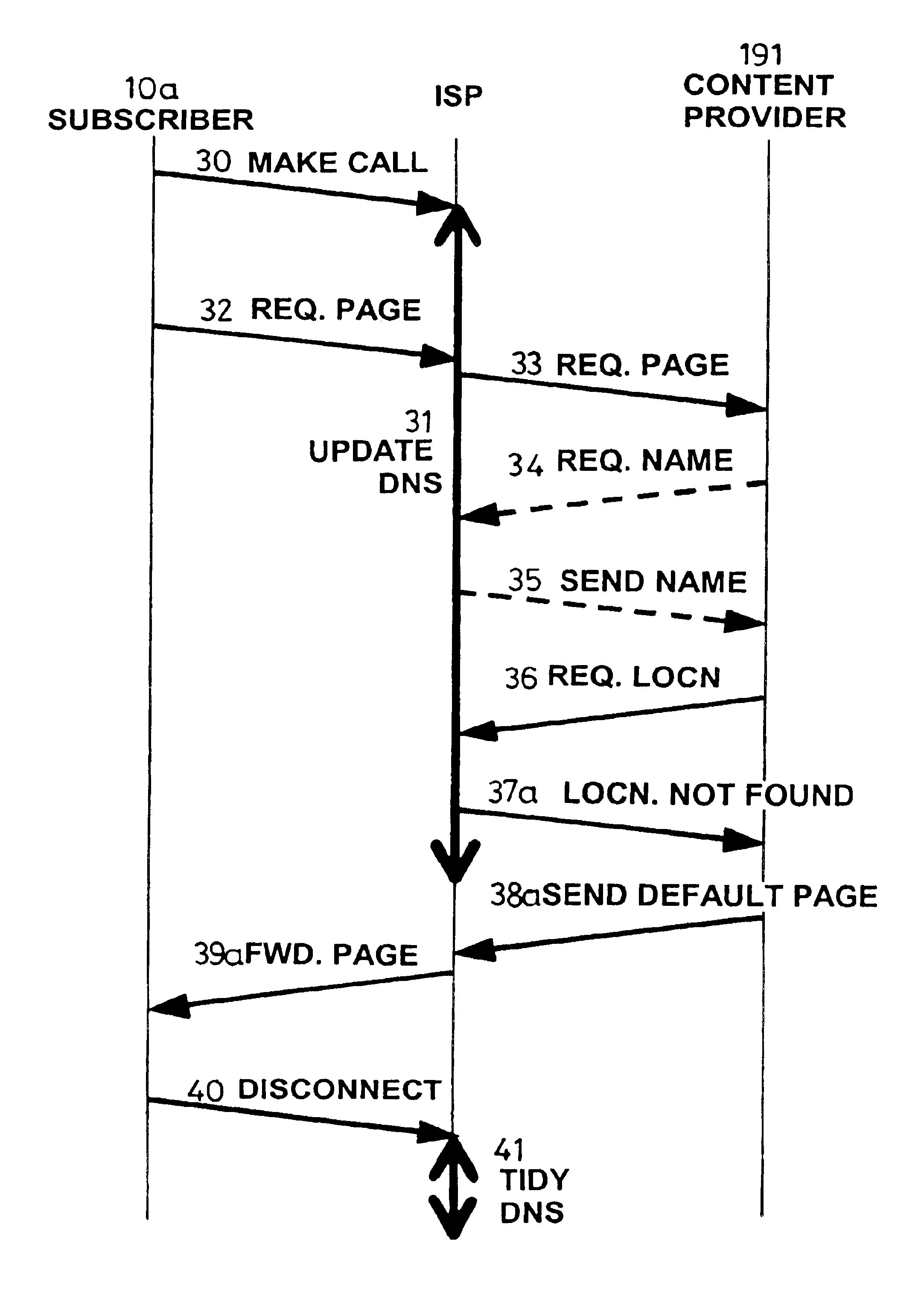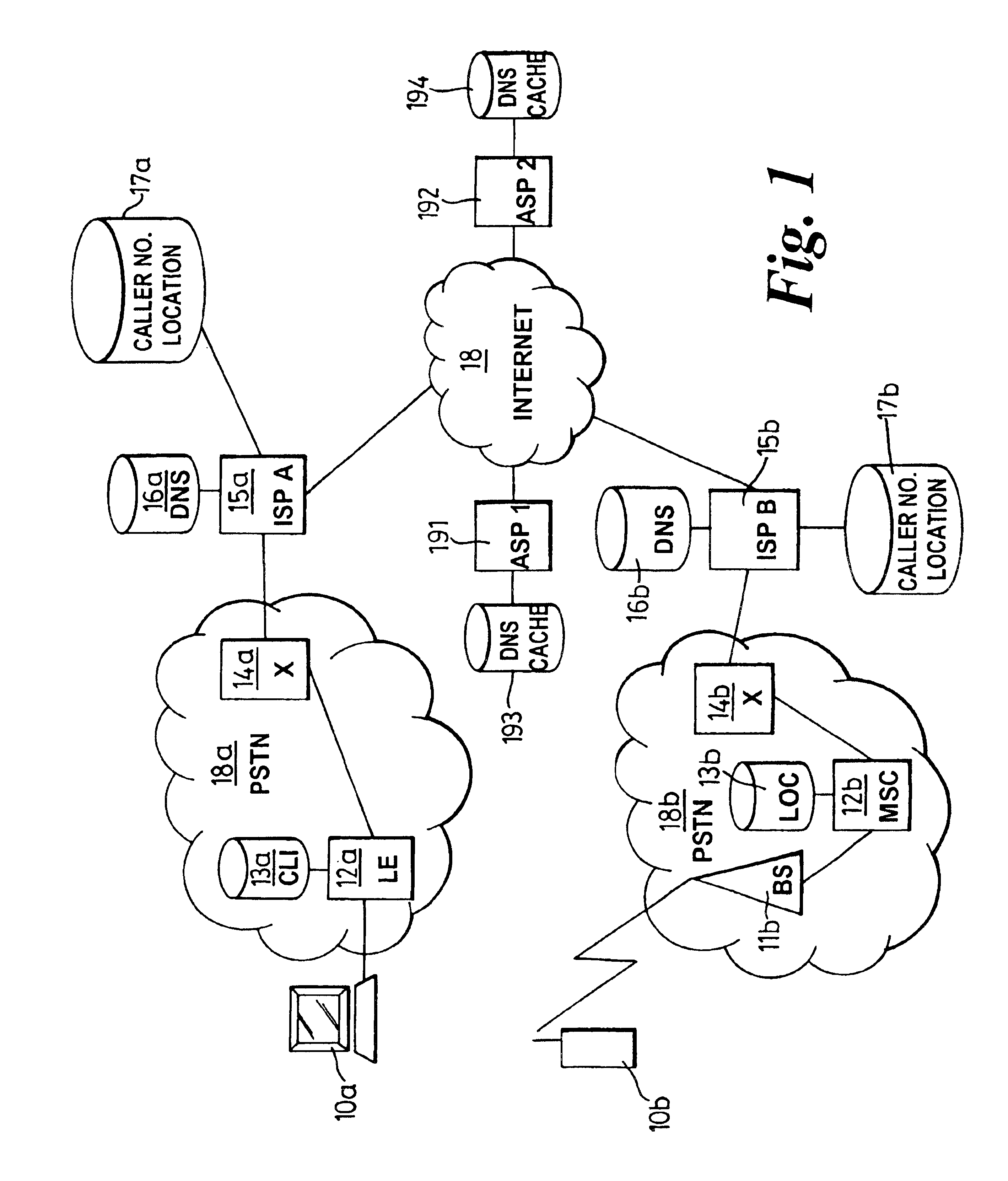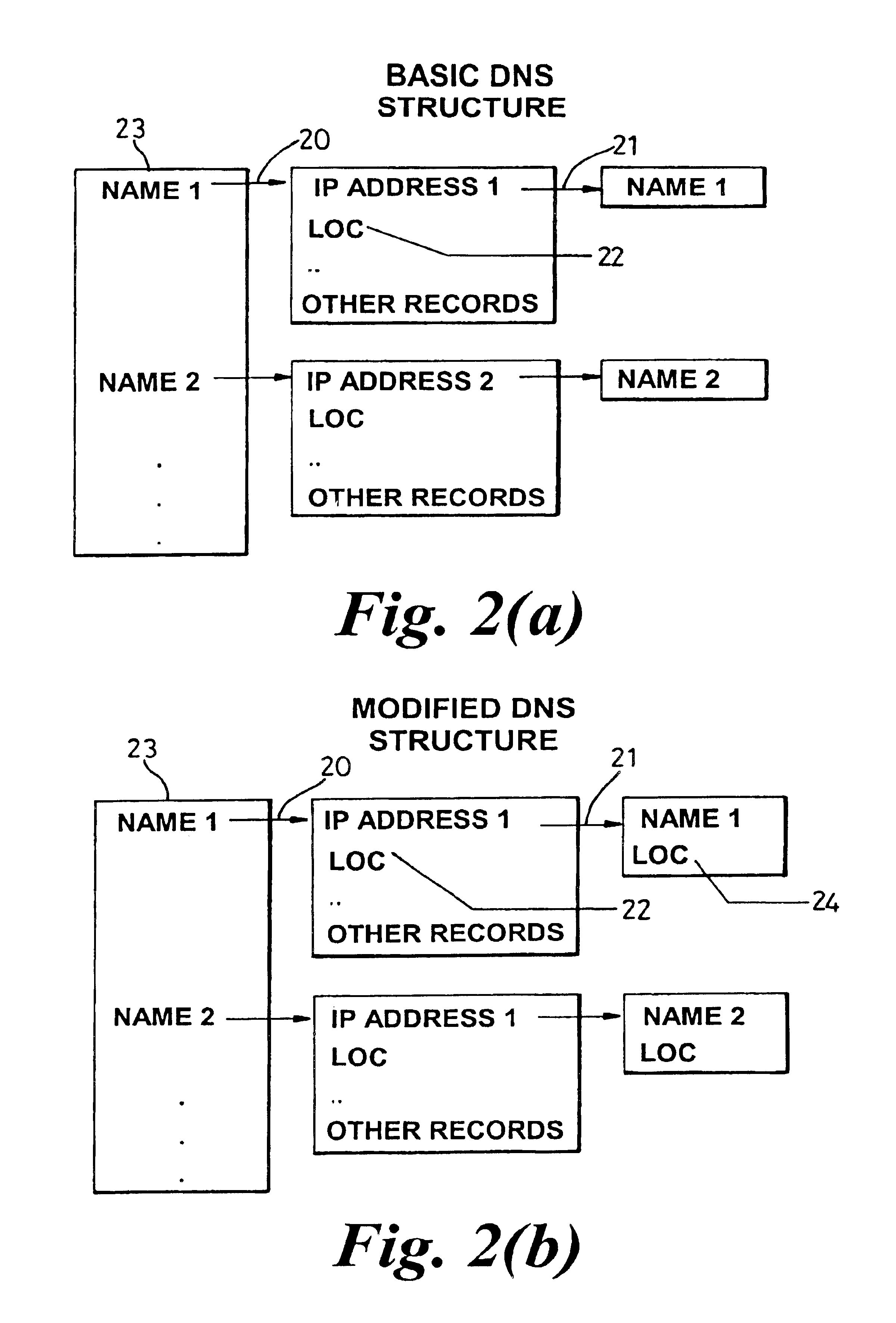Storing subscriber location indication at DNS, to enable location specific provision of internet content
a subscriber location and location technology, applied in the field of providing locality-related internet services, can solve the problems of not addressing the problem, not providing fine-grained location information, and still remaining problems, and achieve the effect of reducing one or more problems
- Summary
- Abstract
- Description
- Claims
- Application Information
AI Technical Summary
Benefits of technology
Problems solved by technology
Method used
Image
Examples
Embodiment Construction
Referring to FIG. 1, there is shown a telecommunications system supporting subscriber access to services available on the Internet. The example presented shows a subscriber terminal 10a and subscriber mobile terminal 10b connected to respective Internet service providers 15a, 15b associated with respective DNSs 16a, 16b via respective access networks 18a, 18b. The Internet service providers 15a, 15b in turn provide access via the Internet 18 to application service providers 191, 192 associated with respective DNS caches 193, 194. Access network 18a exemplifies a typical wireline connection from subscriber terminal 10a via a local exchange 12a and possibly other switches 14a to the ISP 15a. At some point within the access network, means are provided to associate calling line information (CLI) 13a with calls made from the subscriber terminal 10a to ISP 15a.
In the case where a mobile subscriber terminal 10b accesses an ISP 15b via a mobile network 18b the arrangement is in many ways s...
PUM
 Login to View More
Login to View More Abstract
Description
Claims
Application Information
 Login to View More
Login to View More - R&D
- Intellectual Property
- Life Sciences
- Materials
- Tech Scout
- Unparalleled Data Quality
- Higher Quality Content
- 60% Fewer Hallucinations
Browse by: Latest US Patents, China's latest patents, Technical Efficacy Thesaurus, Application Domain, Technology Topic, Popular Technical Reports.
© 2025 PatSnap. All rights reserved.Legal|Privacy policy|Modern Slavery Act Transparency Statement|Sitemap|About US| Contact US: help@patsnap.com



